If there’s one thing that all content marketers know, it’s the importance of call to action (CTA) buttons. A well-placed CTA can help you increase conversions and drive leads and sales. However, many people make the mistake of simply slapping a generic CTA at the end of their content without any thought or planning. If you want to create compelling CTAs that convert, you need to plan them out from start to finish!
Language that builds urgency has been proven effective for improving conversion rates. Try using words and phrases like “limited time only,” “while supplies last,” or “act now.” This type of language creates a sense of urgency that encourages people to take action before it’s too late.
You can also use social proof to improve your conversion rates. Social proof is the idea that people are more likely to take an desired action if they see that others have already done so. For example, you might include testimonials from satisfied customers or showcase how many people have already downloaded your white paper. This type of social proof can be incredibly effective in convincing people to take Action X.
Last but not least, don’t forget about A/B testing! A/B testing is a great way to test different call to action strategies and see which ones are most effective for your audience. Try out different language, placements, and colors to see what works best. Then, once you’ve found a call to action that converts well, roll it out across your website and watch your conversion rate soar!
B2B Marketing News: Enterprise Content Marketing Study, Google’s New Ads Features, LinkedIn’s Spark Event, & Instagram’s Expanded Creator Tags
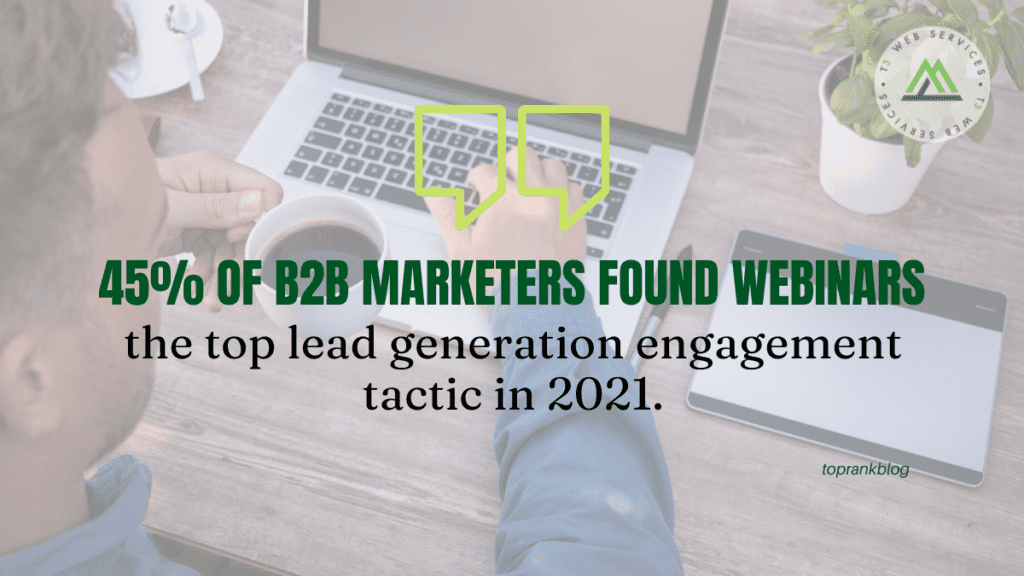

Here’s What B2B Marketers Want Out of Their Content Efforts
91 percent of B2B marketers view creating brand awareness as the primary purpose of content marketing efforts, according to recently-released survey data of interest to digital marketers. The study also showed that 85 percent viewed generating demand and leads as a top purpose of content marketing, while 81 percent pointed to building trust and brand credibility. MarketingCharts
Instagram Launches Updated Creator Tags to Provide More Credit for Content Contributors
Meta-owned Instagram has rolled out new tagging features that will allow digital marketers to better indicate the influencers and creators involved in the creation of content shared on the platform, offering new exposure opportunities for content that has been created by multiple professionals, Instagram recently announced. Social Media Today
66% of brands spent more on creator marketing in past year
52 percent of brands have grown their creator marketing teams over the past year, with 66 percent spending more on influencer and creator-driven efforts — two of several findings of interest to B2B marketers contained in newly-released survey data. Marketing Dive

https://www.toprankblog.com/2022/03/b2b-marketing-news-031122/
SEO & Core Algorithms: How to Address, Analyze, and Affect
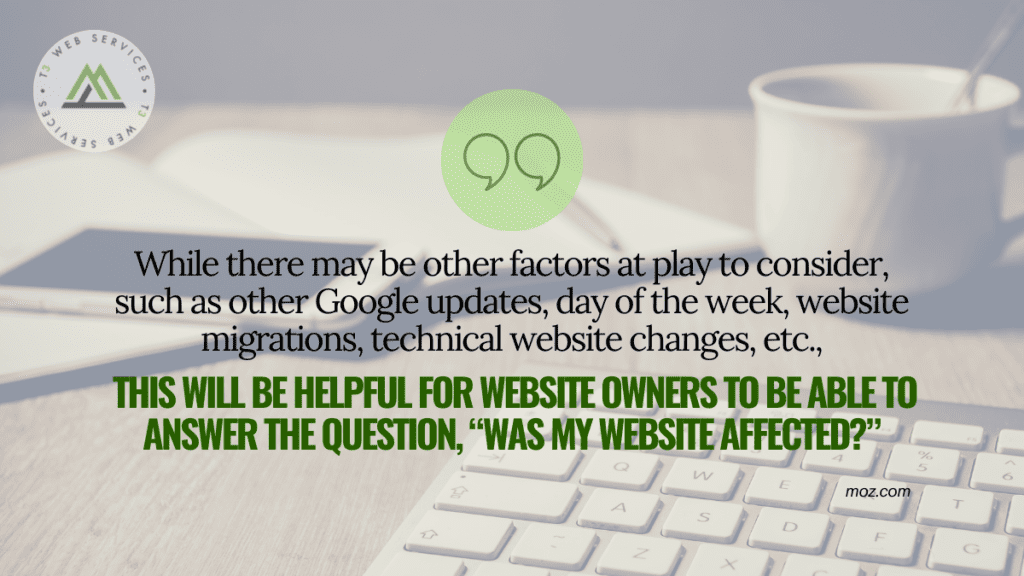

Some of the many insights we can glean in the context of a Core Algorithm Update are the following:
- Changes in visibility within the general space of your keyword set: Gains or losses to an industry as a whole may indicate a number of things, such as a general increase in demand or reduction of Google SERP features.
- Changes in visibility to your website: Gains in visibility to your site after an update indicate that your site was positively impacted, and losses indicate that your site was negatively impacted. Inverse relationships in visibility between your site and competitors can indicate who the winners and losers are after a major update.
- Changes in visibility to Google: Typically, if Google shows a higher level of visibility after a Core Algorithm Update, it is likely the case that they’ve introduced additional SERP features that effectively shifts visibility from your website or competitors.
Given all that background, and using recurring themes from Google’s Search Quality Evaluator Guidelines (what human quality raters use to evaluate websites and SERPs), below are 10 specific website updates that can elevate your website’s E-A-T signals.
- Cite your sources and ensure accuracy of claims
- Kill, redirect, or refresh thin content
- Canonicalize, kill, or redirect duplicate content
- Include author bylines, bios, and author pages by listing specific credentials and awards
- Maintain off-page reputation by updating your Wikipedia page and other informational sources

Read more: https://moz.com/blog/seo-and-core-algorithms
6 Content Helpers That Encourage People To Read, Watch, or Listen
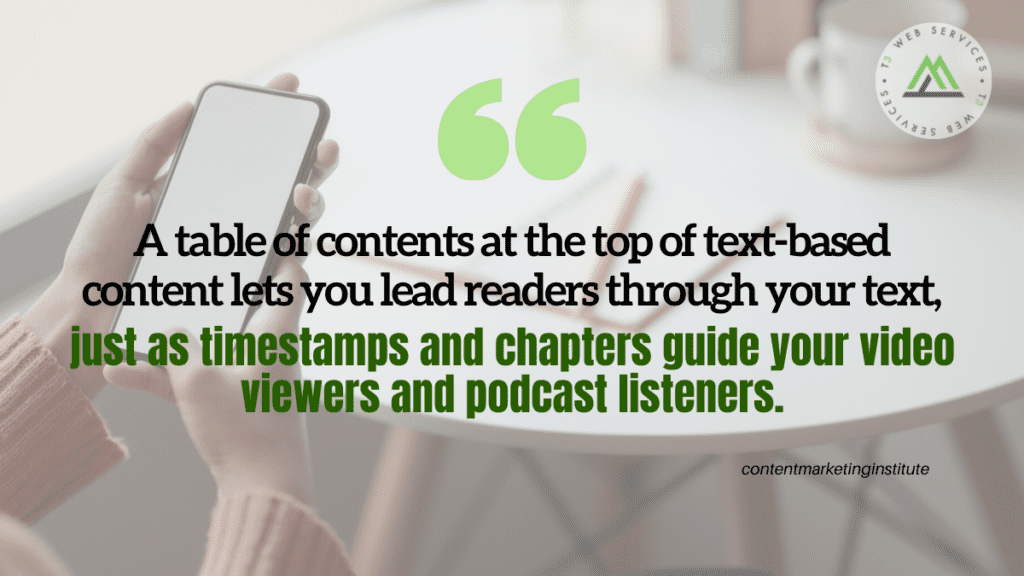

The six tactics in this article make content easier to consume by helping manage time expectations, offering shortcuts, and letting people choose the format they prefer or need.
1. Belly up to a reading bar
Estimating time to read helps people decide whether to read the article now or save it to read later. They also can use it to assess at a glance whether the piece covers the topic in detail or offers a brief overview.
Progress bars help audiences with long-form content. They let readers glance at the progress bar to see how much more time they need to finish the piece instead of scrolling to the top to remind themselves of the reading estimate. (This trick also works well to keep people taking surveys from giving up with only a question or two to go.)
2. Create chapters for your videos and podcasts
Ever watch a how-to video where you wished you could skip over the sections you understand and easily find the steps you need to see? Or maybe you’ve listened to a podcast that recounts details you already know and found yourself wanting to skip to another section of the story.
Your audience likely feels a similar desire with some of your content. Timestamps and chapter markers put them in control of the viewing or listening experience.
3. Create a linked table of contents
A table of contents at the top of text-based content lets you lead readers through your text, just as timestamps and chapters guide your video viewers and podcast listeners.

Read more: https://contentmarketinginstitute.com/m/articles/content-encourage-read-watch-listen
8 SEO costs that impact your ROI
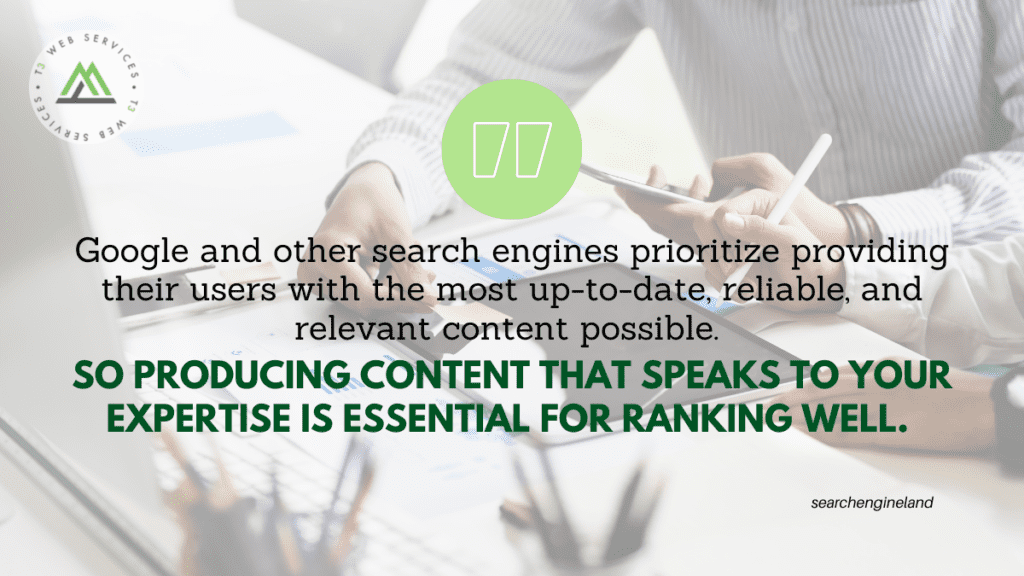

1. SEO specialists
The more knowledge and experience a person or team of people have, the more their services will cost. While that may sound like an obvious statement, paying for someone’s expertise is often overlooked and undervalued.
SEO involves a lot of strategy. No one size fits all formula can magically make a website rank better and increase conversions. An SEO specialist or team must adapt and adjust its strategy to account for unforeseen challenges.
2. SEO software and tools
The other significant cost associated with SEO is the software and tools you need to do your job.
There is no shortage of SEO tools available, both free and paid. They all market themselves similarly and claim to make optimization easier. But again, you get what you pay for.
Free tools are great for a small business that is just dipping its toes into optimizing its website, but they don’t give you all the information you need to do a thorough job. Furthermore, they may not be meant for SEO at all.

Read more: https://searchengineland.com/seo-costs-impact-roi-382184
The Complete Guide to Content Repurposing
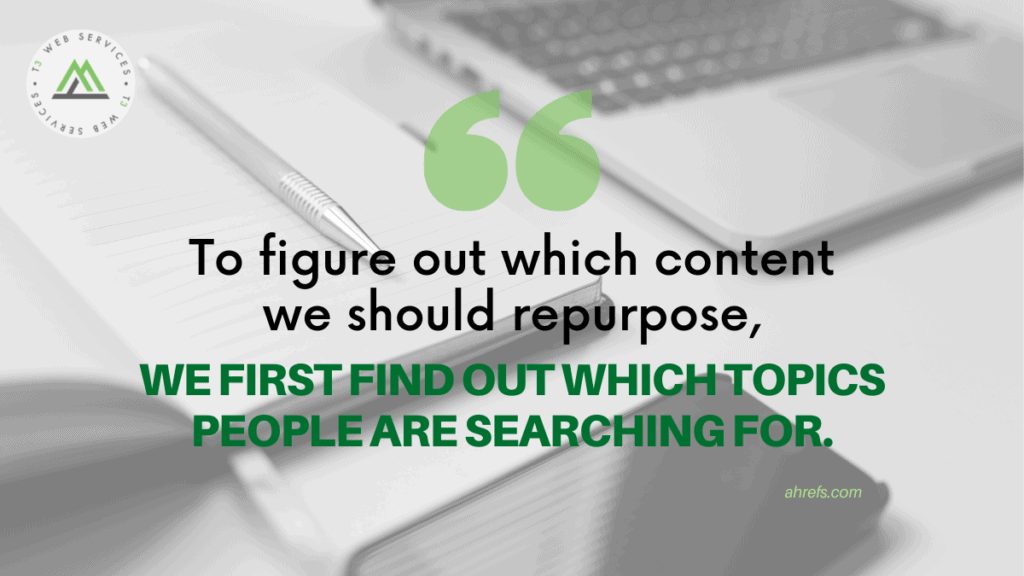

There is no “one piece of content” you must repurpose. It eventually depends on your goals and strategy.
However, content repurposing does require some work. It’s not a one-to-one conversion—you have to expect to do some rewriting or editing so that the content fits the new format and platform.
Expert “repurposers” like GaryVee have a team behind them. They’re not going about it alone. That also means that if you are doing it alone, you will not be able to repurpose every single piece of content.
Translation: You need to prioritize.
A good way to do this is to look at what the platform wants and repurpose content specifically for it. For example, suppose you want to repurpose one of your blog posts into a YouTube video.
Rather than choosing at will, find out what topics people are searching for on YouTube. Then find the best-fit blog post for that topic and repurpose it accordingly. We’ll go into more detail on how to do so shortly.

https://ahrefs.com/blog/repurposing-content/
Google refine this search and broaden this search now live in search results
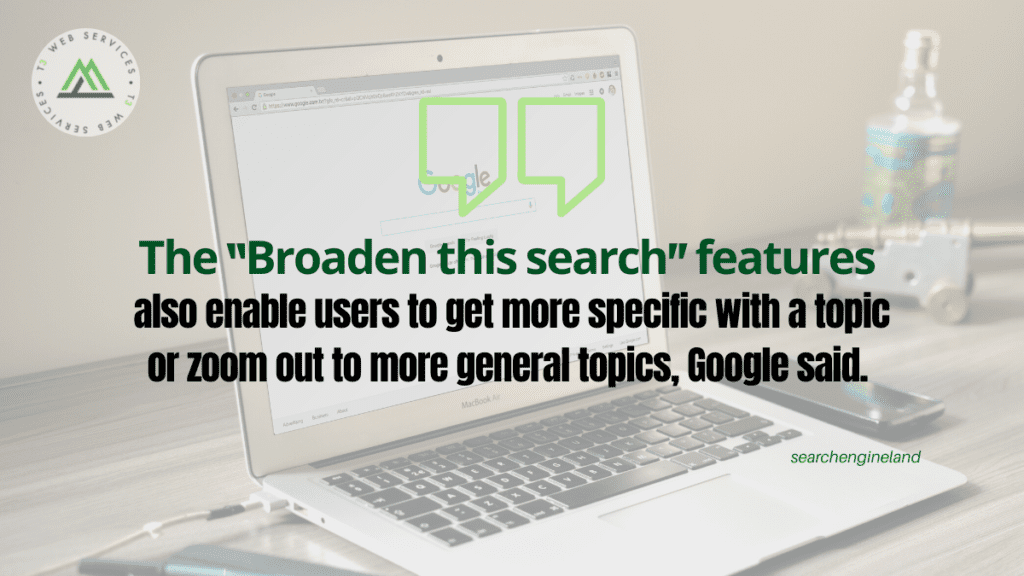

Broaden this search. The “Broaden this search” features also enable users to get more specific with a topic or zoom out to more general topics, Google said. You can now see it come up for a number of queries, here is a screenshot I saw on my mobile device for this feature:
Things to know/consider. Google told us the things to know and things to consider feature is not live yet in Google Search. Google is indeed testing it, as we pointed out above, but it is not fully live yet.
Why we care. These new search features may lead to searchers finding more ways to discover your site in Google Search. Or it might distract searchers from clicking on your snippet in the search results they are looking at. In any event, Google is constantly trying new search features and staying on top of what went live in Google Search is useful for many search marketers.

Winning B2B Calls to Action That Get Responses & Convert Browsers into Buyers
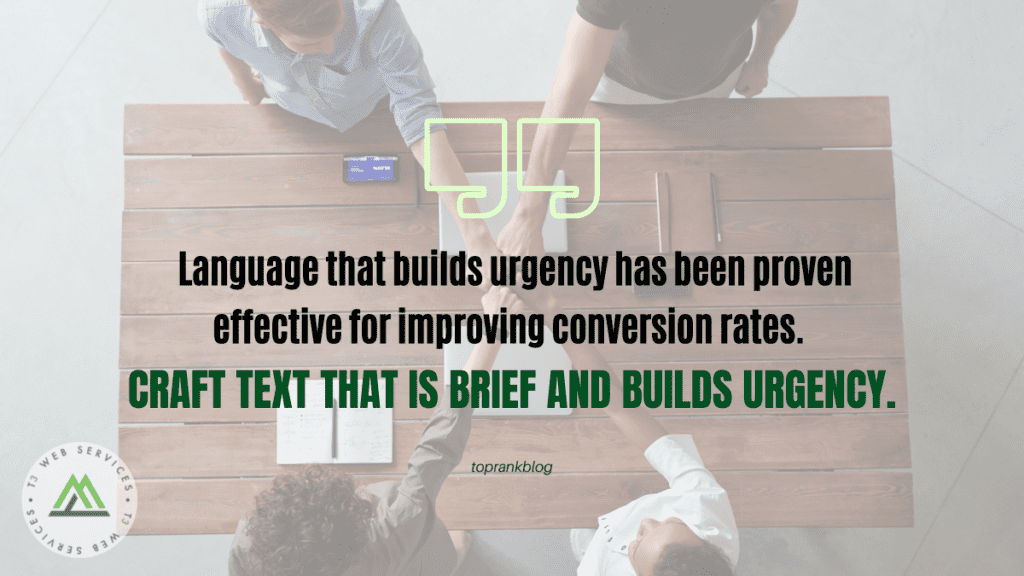

1 — Craft text that is brief and builds urgency
How can you deliver the most enticing proposition possible in the fewest words possible? This is the art of CTA copywriting in a nutshell. Be creative in framing your hook, and try to use words that aren’t generic and predictable.
For example, instead of “Download the guide,” why not say “Snag the guide,” or “Get the goods”? You also might try framing your CTAs around what the user will get out of them, rather than what you want them to do. So instead of “Download the guide,” you could say “Become a [X] expert.”
2 — Be open-minded about the actions you want users to take
CTAs tend to fall into a consistent set of buckets: download a guide/whitepaper, request a demo, access a free trial. These are usually linked to valuable business outcomes, which is why they’re trendy, but there’s a recurring theme you’ll notice in our guidance: that which is different, gets noticed.
Digital guides and demos aren’t necessarily appealing to someone who isn’t directly interested in your brand yet. So what else can you offer that might pull them in? Maybe it’s entry into a contest, or free access to an element of your service, or a personalized digital gift.
3 — Visual choices matter
Saastitute conducted an analysis of more than 100 SaaS companies to gain insight around the most common and recommended stylistic choices for CTAs.
A few of their noteworthy findings:
- Color: The most popular choices for CTA buttons are blue, green and orange.
- Shape: Rectangular buttons with soft rounded edges are by far the most frequent.
- Placement: A majority of CTAs appear on the right side of a page (37%) compared to the middle (29%) or left (24%).

https://www.toprankblog.com/2022/03/winning-b2b-calls-to-action/


Leave a Reply